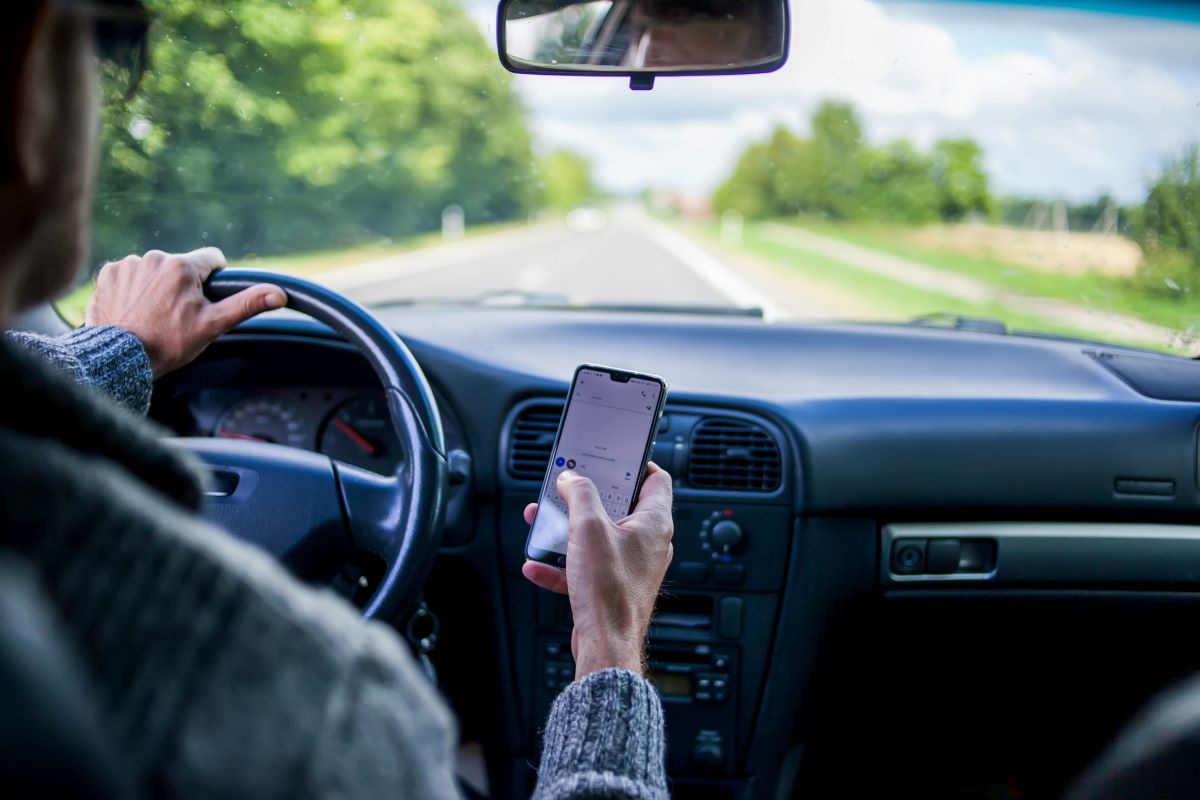
Key Takeaways:Since the pandemic, texting and personal screen time has skyrocketed.All age groups are using texting and direct messaging for the bulk of their social interaction.In fact, are read and responded to in under five minutes.In addition, while 63% of people rely on text messaging, many more are also using messaging services to communicate as well.
Facebook Messenger, Instagram, X (formerly Twitter), TikTok, Snapchat, Slack, WhatsApp, and more, all through their smartphone apps.Unfortunately, with this level of saturation, texting impacts driving by creating distracted drivers and increasing the number of accidents caused while looking at a smartphone screen.In fact, the National Highway Traffic Safety Administration (NHTSA) estimates that are killed each year in text-related driving accidents.Regardless of the near nation-wide ban on driving and texting, people continue to keep an eye on their screens while risking an immediate ticket (with associated fines and point reductions), as well as potential auto insurance rate increases, and significant financial repercussions if they cause an accident.The True Cost of Texting While Driving – Fines, Points, and Increased Insurance PremiumsA distracted driving violation and ticket can increase your insurance rate by for up to three years and sometimes more.In comparison, Careless Driving can increase your annual insurance premiums by 22%, DUI/DWI up to 19%, and Speeding (30+ miles above the legal limit) up to 15%.While increases can vary depending on state law and insurance company policies, this could mean that an annual premium for auto insurance of $2,008 would increase to $2,552 or $544 more dollars per year (or $1,632 over three years).Beyond the increase in insurance premiums, most states have fines (usually from $300 to $1,000) and demerit points (a loss of 4 to 6 points) that affect your driving record and your wallet.
For second offenses, many states can impose up to a year in jail.And if there is an accident that results in bodily injury, the fines and points grow exponentially.In the eyes of the insurance industry, which is predicated on risk assessment and mitigation, it also labels you as a high-risk driver.This means that it is assumed you are more likely to get behind the wheel after drinking and to exhibit high risk driving habits, like speeding, ignoring posted laws, or driving carelessly.Additional penalties from your insurance carrier can include the loss of insurance discounts, e.g., good driver discount, imposed probationary periods, mandatory supervision, and the potential for outright cancellation of your policy.Understanding the Financial Impact of Distracted Driving on Insurance RatesThe percentage increase for texting violations vs.
other moving violations, like speeding or DUI (e.g., 27% vs.15%) demonstrates how serious insurance companies regard texting distractions while driving.On average, a driver takes their attention away AND their eyes off the road for at least five seconds each time they view or answer a text message.That means when you are driving at 55 mph, the distance you cover while distracted equates to the .Additionally, while distracted drivers are responsible for over 25% of auto-related deaths, teen drivers are even more problematic with over 58% of teen crashes caused by texting while driving.Teenagers vs.
Adults – Texting when DrivingIt’s certainly not like people haven’t heard plenty about the dangers of texting and driving.However, teenagers are far more likely to exhibit dangerous behaviors when driving just as a matter of due course.Some of the more universal adolescent behaviors and changes that cause accelerated risk taking include:In fact, the prefrontal cortex doesn’t fully engage until around 25 years of age.
This is also a factor in why insurance is generally more expensive for young people until that age.While adolescent risk taking is a factor in texting while driving, insurance companies and state entities offer safe-driving programs designed to mitigate risky driving and texting while driving.Reviewing the Legal Consequences for Texting While Driving TicketsRegardless of age, texting while driving can be problematic.You hear that familiar notification and out of sheer habit, reach for your smartphone.It’s not just you.
On average, people pick up their phone over 50 times per day to respond to a notification or just to check to see what’s happening.But if that’s does while driving, you have taken your attention and your eyes away from the task at hand and that can have serious legal ramifications.Let’s take a thorough look at the legal and financial consequences of texting while driving tickets.And in the event of an accident, a business owner could be liable for personal medical bills and lost time wages, property damage, and even be exposed to civil liability.Be sure you understand the terms of your individual insurance policy by reviewing the specific criteria on distracted driving penalties.Solutions for You or Your TeenSeparating two things that are individually important in everyone’s lives, like driving and texting, seems like it should be easy when faced with penalties and fines.But who hasn’t picked up their phone when expecting an important business-related message or concern about a child’s safety? Unfortunately, as we’ve seen repeatedly on the news, that could be the split second that changes your life.Here are some solutions that could keep you and your family safe:A Final WordWhen driving, always remember that ‘seconds count.’ There are so many distractions going on around you when you are driving—traffic, radio and podcasts, kids in the back seat, being late for an appointment, a car full of teenagers, etc.
It requires every ounce of your attention to keep you and everyone around you safe.The last thing you need is to be distracted by reading and answering text messages.As states and insurance companies continue to strengthen their responses to the issue of distracted driving, you can expect trends like wider adoption of mandates for hands-free technology, tiered insurance premiums based on distracted driving risks, and advanced vehicle-based distractions detection systems to alert drivers proactively to danger.Currently, while many of the enforcement tactics are impactful ‘after the fact,’ we have provided numerous suggestions on how to approach this issue before there is a problem.As you review your current auto insurance policy to help understand how distracted driving is handled, you can use a marketplace site, like to compare costs and then speak with an expert agent to discuss alternatives and solutions.Here’s to safe driving!
Publisher: EINSURANCE








